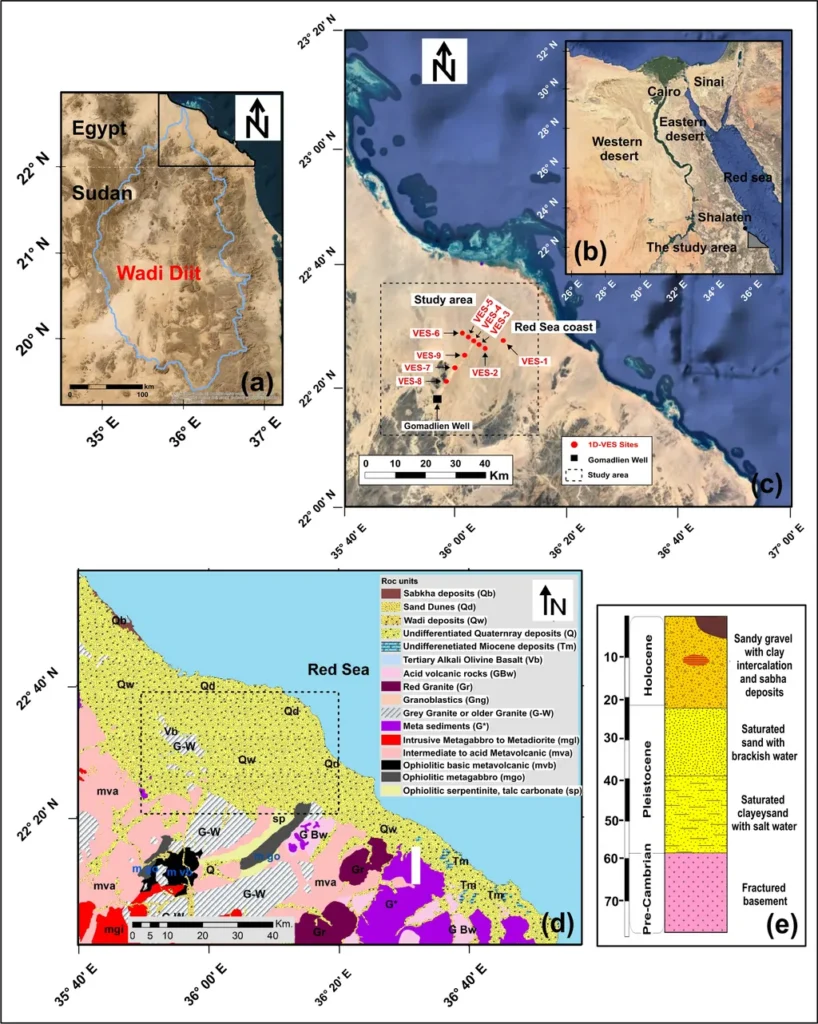In the heart of Egypt’s arid landscapes, a groundbreaking study is offering new hope for sustainable water management, with significant implications for the energy sector. Dr. Zenhom E. Salem, a geologist from Tanta University, has pioneered a method to map groundwater potential in Wadi Araba, a region where water scarcity is a pressing challenge. Published in the journal *Frontiers in Marine Science* (translated to *Ahead in Marine Science*), this research could reshape how we approach water resource management in arid regions.
Wadi Araba, a basin flowing into the Gulf of Suez, presents a complex hydrogeological puzzle. Limited field data and a growing demand for water for domestic, agricultural, and industrial use make sustainable water management a critical issue. Dr. Salem’s study leverages geospatial technology and the Analytic Hierarchy Process (AHP) to create a detailed groundwater potential map. “This method allows us to integrate various factors like surface conditions, climate, and geological structures to identify areas with high groundwater potential,” Dr. Salem explains.
Using ArcGIS 10.8, Dr. Salem and his team analyzed ten thematic layers, including slope, soil permeability, rainfall, and structural elements like drainage and lineaments. The resulting map reveals three distinct categories of groundwater potential: low in the northern and southern zones, intermediate in the middle and western sections, and high in the northeastern basin near the Gulf of Suez. “The patterns we observed correspond closely with the physical and climatic conditions of the region,” Dr. Salem notes.
The study’s findings are not just academically significant but also hold substantial commercial implications for the energy sector. Water is a critical resource for energy production, particularly in arid regions where cooling and extraction processes are water-intensive. By identifying areas with high groundwater potential, this research can guide the strategic placement of energy infrastructure, ensuring sustainable water use and reducing the risk of water scarcity impacting energy production.
Moreover, the method employed by Dr. Salem offers a replicable model for other arid regions with limited field data. “This study provides a robust framework for assessing groundwater potential in similar environments,” Dr. Salem states. The accuracy of the derived zones was validated using ROC-AUC analysis, with a prediction accuracy of 78.7%, underscoring the reliability of the method.
As the world grapples with the challenges of climate change and water scarcity, innovative solutions like Dr. Salem’s research are crucial. The energy sector, in particular, stands to benefit from these advancements, ensuring that water resources are managed sustainably and efficiently. This research not only sheds light on the groundwater potential of Wadi Araba but also paves the way for future developments in water resource management in arid regions worldwide.

